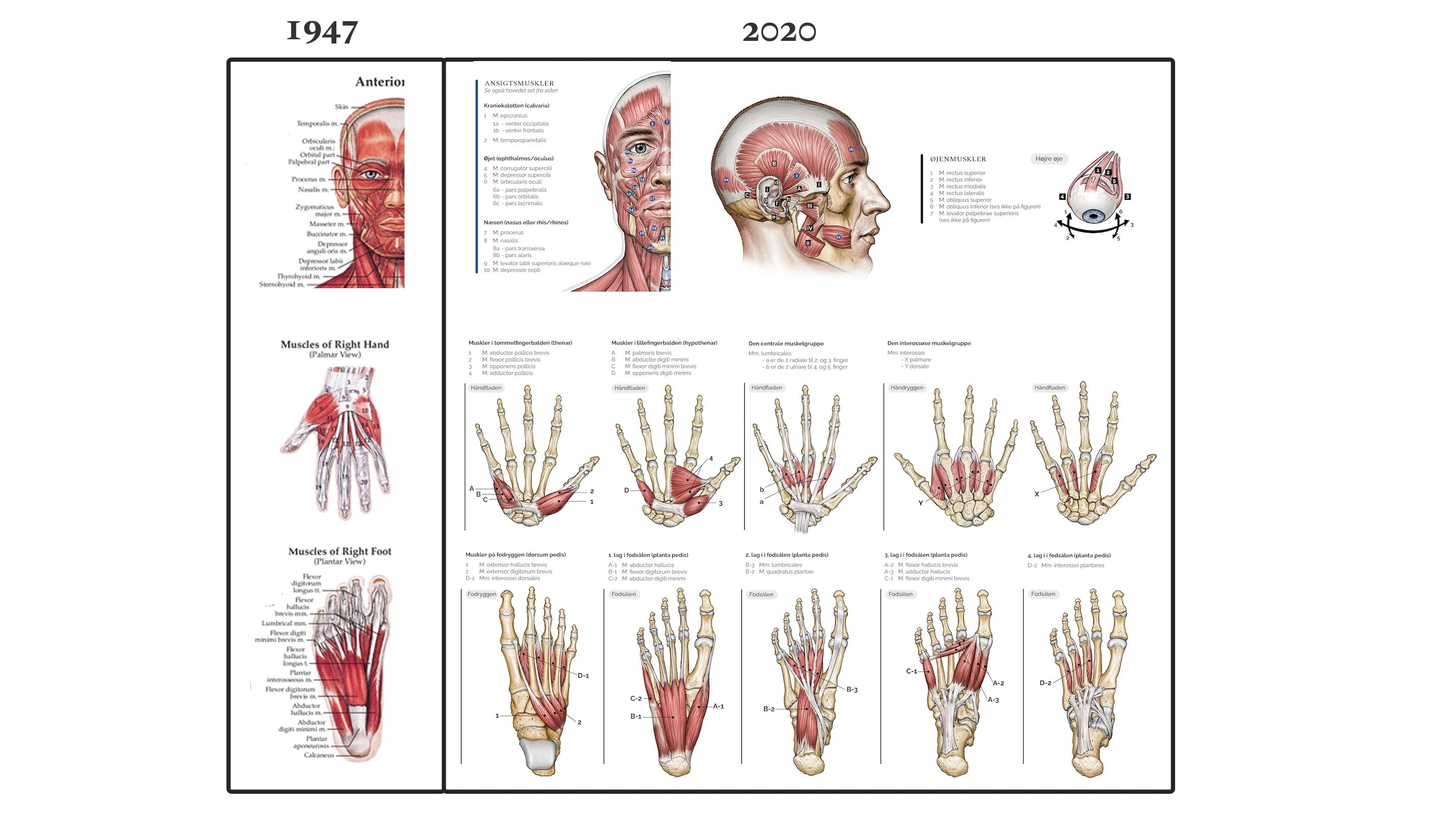Knowing what it takes to create something completely new in a field of interest that never seems to change is not something that is done quickly. We spent 3 years designing and creating the EA1 - Anatomy of the Musculoskeletal System poster, and during that process we felt the hardships and setbacks of the constant revisions and editions we had to go through before finally achieving our goal with the project.
The aforementioned is happily forgotten, as we once again set out to create a new poster, which this time will be the ultimate poster about the muscular system, focusing exclusively on muscles.
The purpose of rethinking what a muscle poster is is to create a solution to a problem that we always experience with the existing muscle posters on the market; We feel lost and completely frustrated by the total lack of structure, content in both text and visualization which leaves us with no chance of getting the overview of the muscle groups that is the goal of a muscle poster.
The creation of the EA5 muscular system
The goal IS simple. We want to create a poster that does what a poster about the muscular system should do; namely, provide a logical overview of the location, name, and grouping of muscles, both visually and in nomenclature.
The work is starting.
We start by clarifying the content and scope of the poster and recognize that we need to include everything. Muscles need to be grouped, names need to be written correctly and in the correct order, and we need to see the muscles. We first try to reuse ideas from our work on the EA1 poster, such as the lines between text and illustration, but we find that it becomes a big mess. Instead, we invent a very simple but clever system that basically uses systematic colors and groupings, which leaves the illustrations clear, while the eye catches the connection between the colored numbers and groupings of muscle names. At the same time, we produce unique illustrations to visualize, for example, the muscles around the ribs and pelvis, and we design a muscle figure with a high level of detail in both the deep and superficial muscle layers.
The work takes place over a year, with constant and gradual development of each section of the poster.
Once we are done, we take a close look at all the existing muscle posters on the market, which we have been disappointed with for so many years, and compare them with the results of our work with the EA5 muscle system poster. Our observations can be summarized as follows;
The 5 most important features of the EA5 muscle poster that distinguish it from existing muscle posters on the market are briefly:

1) All the muscles in the human body can be grouped, which is important when learning to know and remember them. On our poster, they are all grouped logically, so that there is no doubt which muscle group each individual muscle belongs to. Examples of these muscle groups are the chewing muscles in the jaw, the muscle groups of the neck and the muscle groups of the thigh. The muscle groups on the poster are completely identical to the muscle groups in the textbooks used in medical studies in Denmark.
On older existing muscle posters, the muscles are not grouped, and for example, you cannot see that the m. brachioradialis belongs to the extensor muscles of the forearm.
2) In many places on the poster, the muscles are also named and illustrated in their layers or so-called lodges. As an example, you can quickly and easily see the division of the neck muscles into layers (the superficial, the suprahyoid, the infrahyoid, the deep and the scalene muscles).
On older existing muscle plaques, layering is not seen.
3) A logical and pedagogical learning system based on colors, precise numbering and visual aids makes it easy and quick to identify each muscle group with its different muscles as well as the display of these muscles on the poster's illustrations.
On older existing muscle posters, the muscles and their names are shown randomly using visually distracting lines and often mixed together, making it very difficult to identify the 4 paired masseter muscles quickly and easily, for example. This means that the effort to identify all of these masseter muscles can be like “looking for a needle in a haystack”.
4) The poster includes clinical details such as the directions in which the eye muscles move the eyeball, the relationship of the rectus sheath with respect to the linea arcuata, the inguinal canal in men, the rotator cuff in the shoulder, and the functions of the muscles in the larynx (e.g. tension and relaxation of the vocal cords).
On older existing muscle posters, clinical details are not visible.
5) The poster comes in local language versions, where for example the Danish version has Naming of muscles written in pure Latin, and all headings contain Danish names. Furthermore, explanatory text is written in Danish. The English version comes in plain English for both titles, explanatory texts and muscle names (Anglo-Latin).
All told, we think anyone who sets out to learn about muscles and wants to keep their knowledge fresh in their memory will love our new muscular system poster.



1 comment
Hej denne plakat er meget interessant for mig, da jeg igennem de sidste ca. 30 år har arbejdet med kropskorrektion, udfra en læring på et kursus, at vores kranie, hænder og fødder bærer lige mange knogle enheder, hvilket var en stor øjenåbner for mig. som har givet mig en indsigtsgivende læring omkring kroppen og kroppens bevægemønstre, samt samspil med vore organer. Hvad er Prisen på denne plakat ? mvh. Anni klint